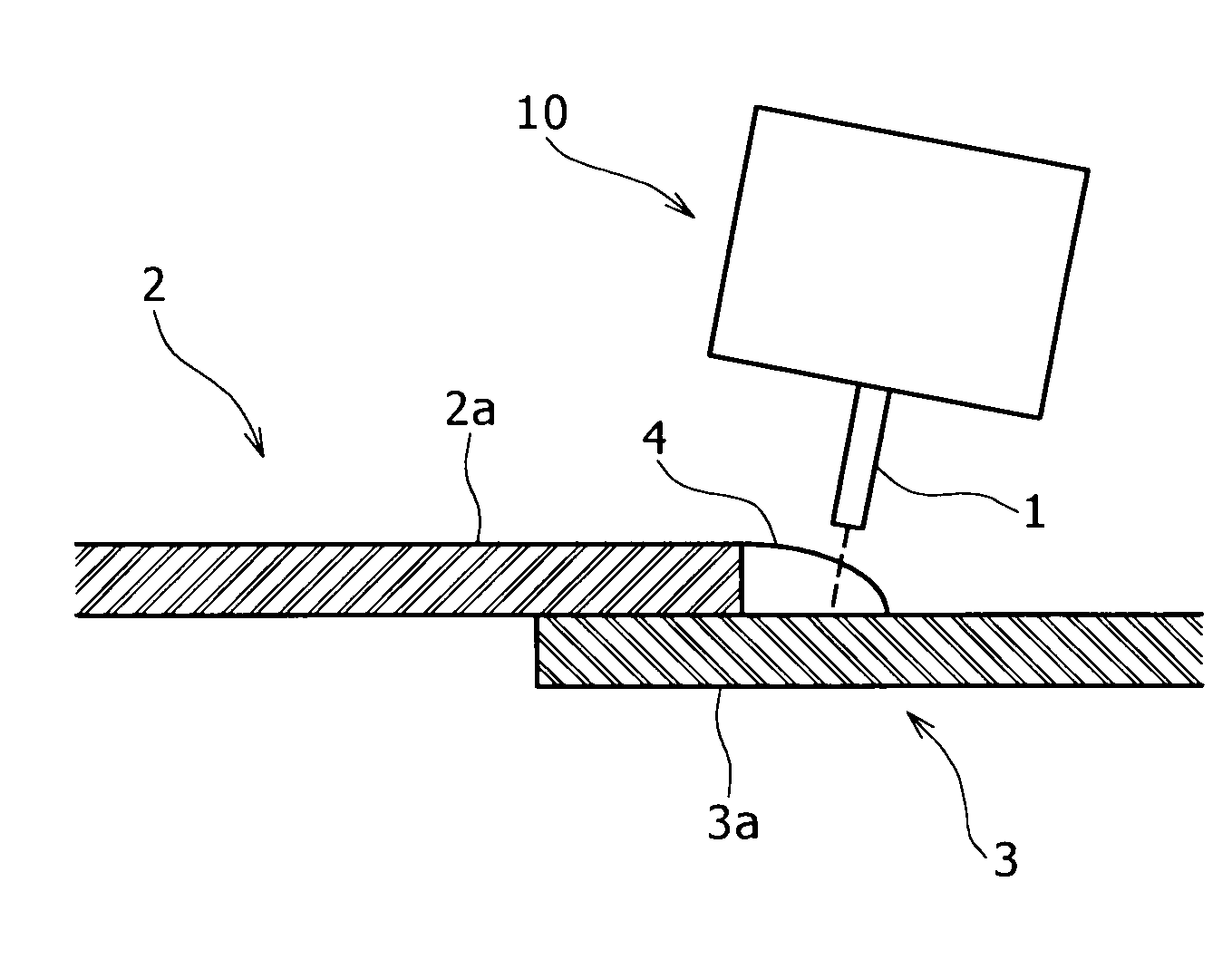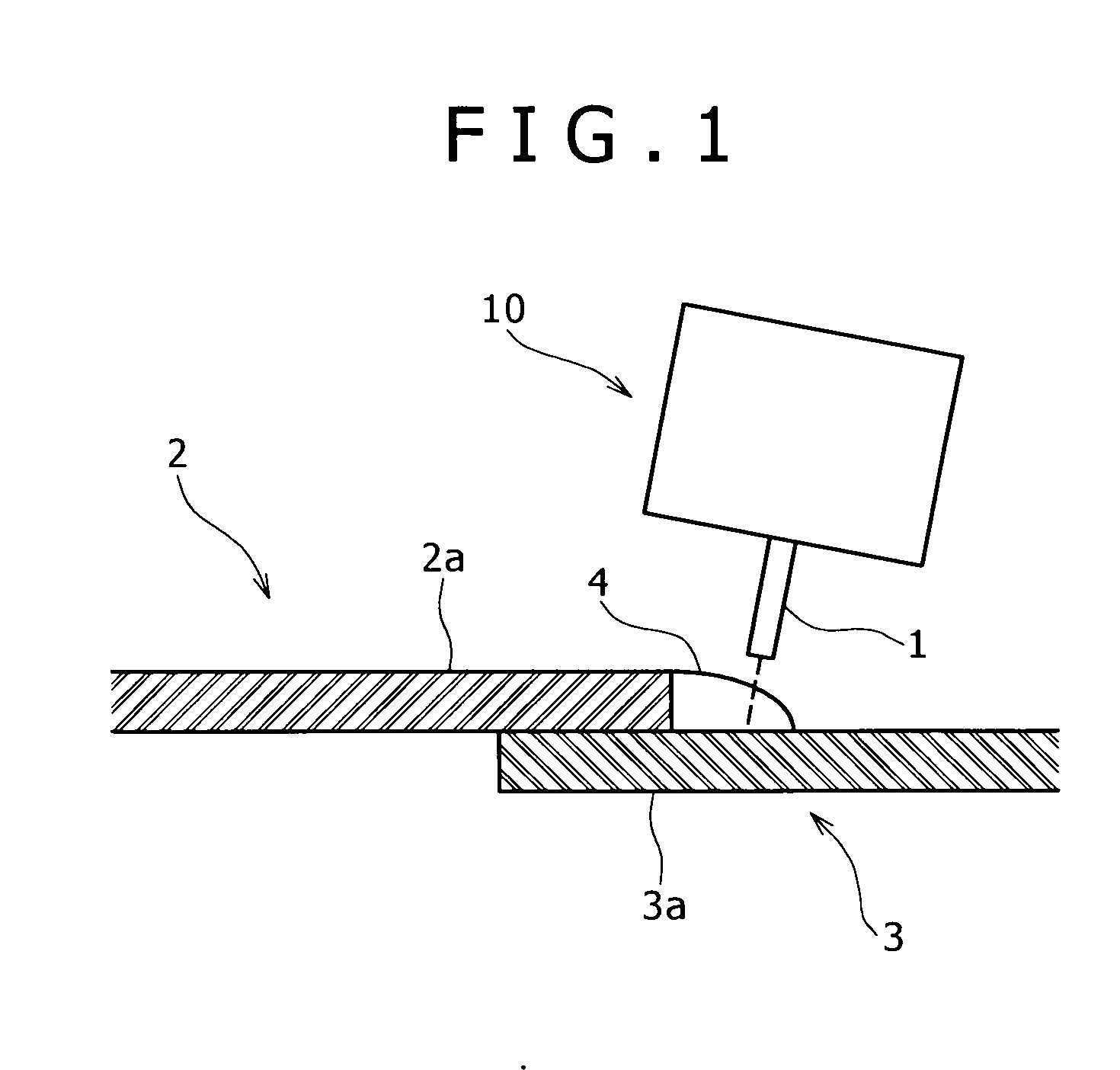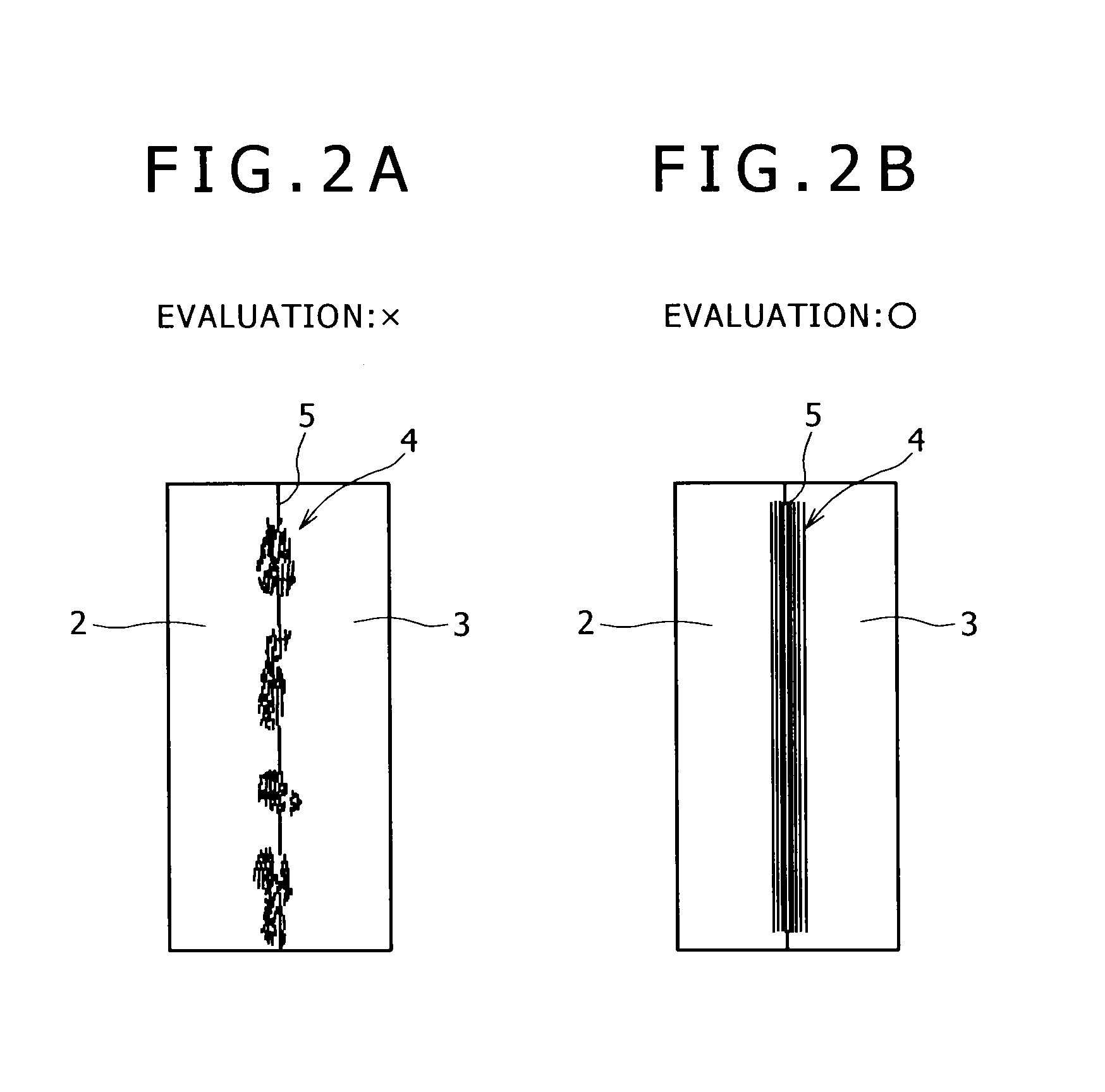Flux-cored wire for different-material bonding and method of bonding different materials
a technology of flux cored wire and different materials, applied in the direction of solventing apparatus, manufacturing tools, transportation and packaging, etc., can solve the problems of low thermal conductivity, low bonding strength, air tightness, etc., and achieve the effect of enhancing bonding strength, enhancing bonding strength, and enhancing bonding strength
- Summary
- Abstract
- Description
- Claims
- Application Information
AI Technical Summary
Benefits of technology
Problems solved by technology
Method used
Image
Examples
working examples
[0164]
TABLE 5Evaluation on a welded jointFilling factorShearSectional shape ofof flux of atensilea bead, a ratioExternalWeight ofRemarksflux cored wirestrengthof a (width) / appearancethe fume(Steel sheetNo.ClassificationMass %N / mmb (height)of a beadevolvedin use)1Comparative example0Not bonded———GA steel sheet2Working example0.1178◯◯⊚GA steel sheet3Working example10256◯◯◯GA steel sheet4Working example24225◯◯◯GA steel sheet5Comparative example5051XXXGA steel sheet6Working example10165◯◯◯Bare steel sheet7Working example24199◯◯◯Bare steel sheet8Comparative example1043XX◯GA steel sheet9Comparative example1037XX◯GA steel sheet
TABLE 6Evaluation on a welded jointFilling factorShearSectional shape ofof flux of atensilea bead, a ratioExternalWeight ofRemarksflux cored wirestrengthof a (width) / appearancethe fume(Steel sheetNo.ClassificationMass %N / mmb (height)of a beadevolvedin use)10Comparative example0Not bonded———GA steel sheet11Working example0.5184◯◯⊚GA steel sheet12Working example13.5262...
PUM
| Property | Measurement | Unit |
|---|---|---|
| diameter | aaaaa | aaaaa |
| melting point | aaaaa | aaaaa |
| diameter | aaaaa | aaaaa |
Abstract
Description
Claims
Application Information
 Login to View More
Login to View More - R&D
- Intellectual Property
- Life Sciences
- Materials
- Tech Scout
- Unparalleled Data Quality
- Higher Quality Content
- 60% Fewer Hallucinations
Browse by: Latest US Patents, China's latest patents, Technical Efficacy Thesaurus, Application Domain, Technology Topic, Popular Technical Reports.
© 2025 PatSnap. All rights reserved.Legal|Privacy policy|Modern Slavery Act Transparency Statement|Sitemap|About US| Contact US: help@patsnap.com



